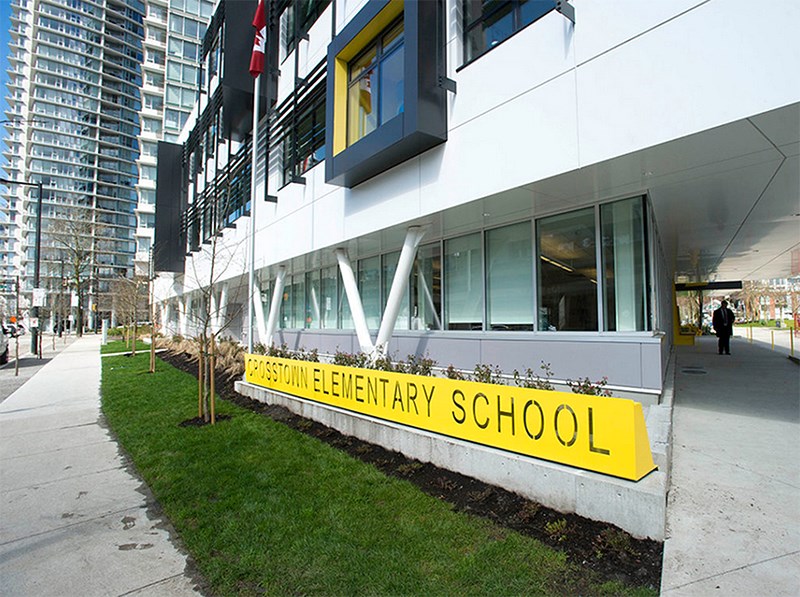Schools built over multiple storeys that have community space and are next to parks would better serve a growing population where land is scarce and costly, according to the Urban Development Institute.
The non-profit association representing the development industry made the comments after learning that School District 43 (SD43) in Coquitlam is planning to increase fees developers pay for new schools because of a sharp increase in land prices.
Under a proposal to be shared with the cities of Port Coquitlam, Coquitlam, Port Moody, Anmore and Belcarra and passed on to builders in those areas if approved, school site acquisition charges will increase from $392 per unit to $600 for high density condo projects and from $654 to $1,000 per unit for low-density detached homes.
“Developers support fees that are actually targeted toward provision of this important educational amenity,” said Anne McMullin, president and CEO of UDI, in an email statement.
But she suggested school districts consider “building up rather than out” when it comes to schools, citing as an example Crosstown elementary in Vancouver, which is four storeys and built above a parkade.
McMullin is concerned that while school site acquisition charges aren’t a large burden on their own, when added to other fees developers pay they can increase to the cost of homes.
“While many of the government taxes and fees contribute to crucial hard costs like new schools or water and sewer infrastructure, many like the province’s increased school tax (which also applies to residential development lands) do not and go toward general revenue. Cumulatively, there is little doubt these layers of taxes and fees are only making housing more expensive,” she added.
Smaller footprint
The school acquisition site charges are mandated by the provincial government, collected by the municipalities and then transferred to the school district twice a year to be held in reserve to purchase land for schools.
McMullin’s comments come as SD43 has admitted it needs to look at new ways to build schools to make them more affordable.
Officials told trustees at the Tuesday, June 5 board of education meeting that Â鶹´«Ă˝Ół»is being looked at as an example of how to utilize land more efficiently.
Sites for new schools in undeveloped areas are already being pared down in the district’s eligible school site proposal from 2.5 hectares per school site — about six acres — to one hectare or slightly more for areas where land costs are sharply rising.
The district also works with cities on joint use agreements for fields built and owned by the city, but shared with schools.
“We’re becoming more urbanized,” acknowledged Ivano Cecchini, assistant secretary treasurer of facilities and planning, who told the board future schools will “maximize areas for play on a smaller footprint.”
The problem is becoming particularly acute when property changes from industrial to urban. In Port Moody, for example, the district is planning to acquire 1.6 hectares on the former Flavelle cedar mill site, which has received Metro Â鶹´«Ă˝Ół»approval for a change in the land use designation for the 12.7 acre site from industrial to general urban use.
The long-term plan for that property is to build 3,400 residential units for up to 7,000 residents and SD43 requires 1.6 hectares for a new school for 430 students with land costs estimated at a stunning $40.2 million.
Last year, costs were projected at just $9 million.
Another area where the district is facing challenges is Fraser Mills in Coquitlam, where a school had been slated but was removed when density dropped. More homes are now projected and a one-hectare site is being contemplated, but as yet there is no land set aside in the current plan.
Estimated land costs for a new school there is $12 million.
Other schools planned to meet future development needs are Riverwalk, for 430 students at a cost of $13.8 million for 2.5 hectares, up from $9 million last year, Marigold elementary for 430 students at a cost of $13.8 million, up from $9 million last year, and a new elementary school for Anmore/Port Moody for 430 students on 2.5 acres at a cost of $8.7 million.
Land costs are based on independent sources and appraisals, according to the school district.
Ěý



